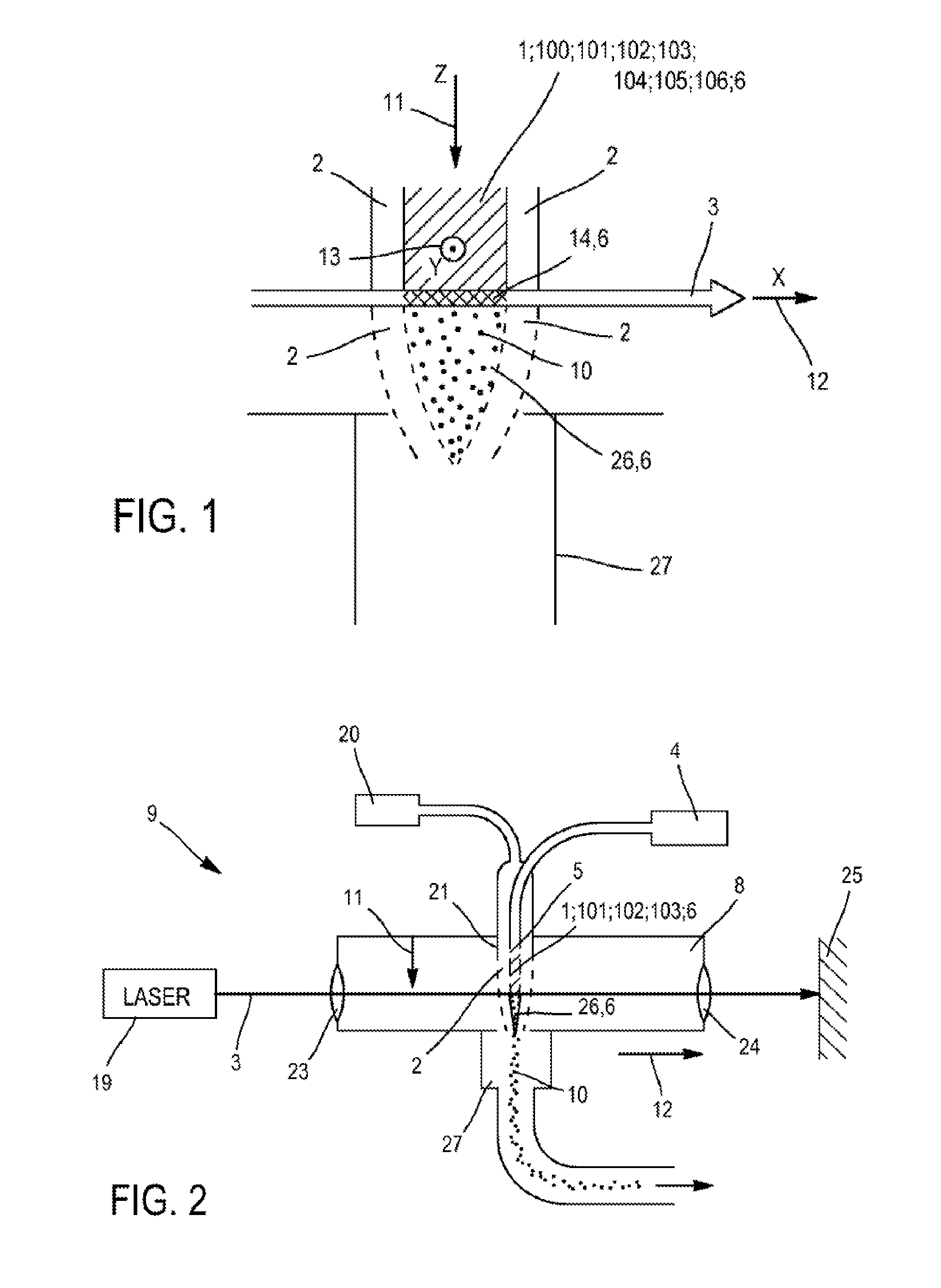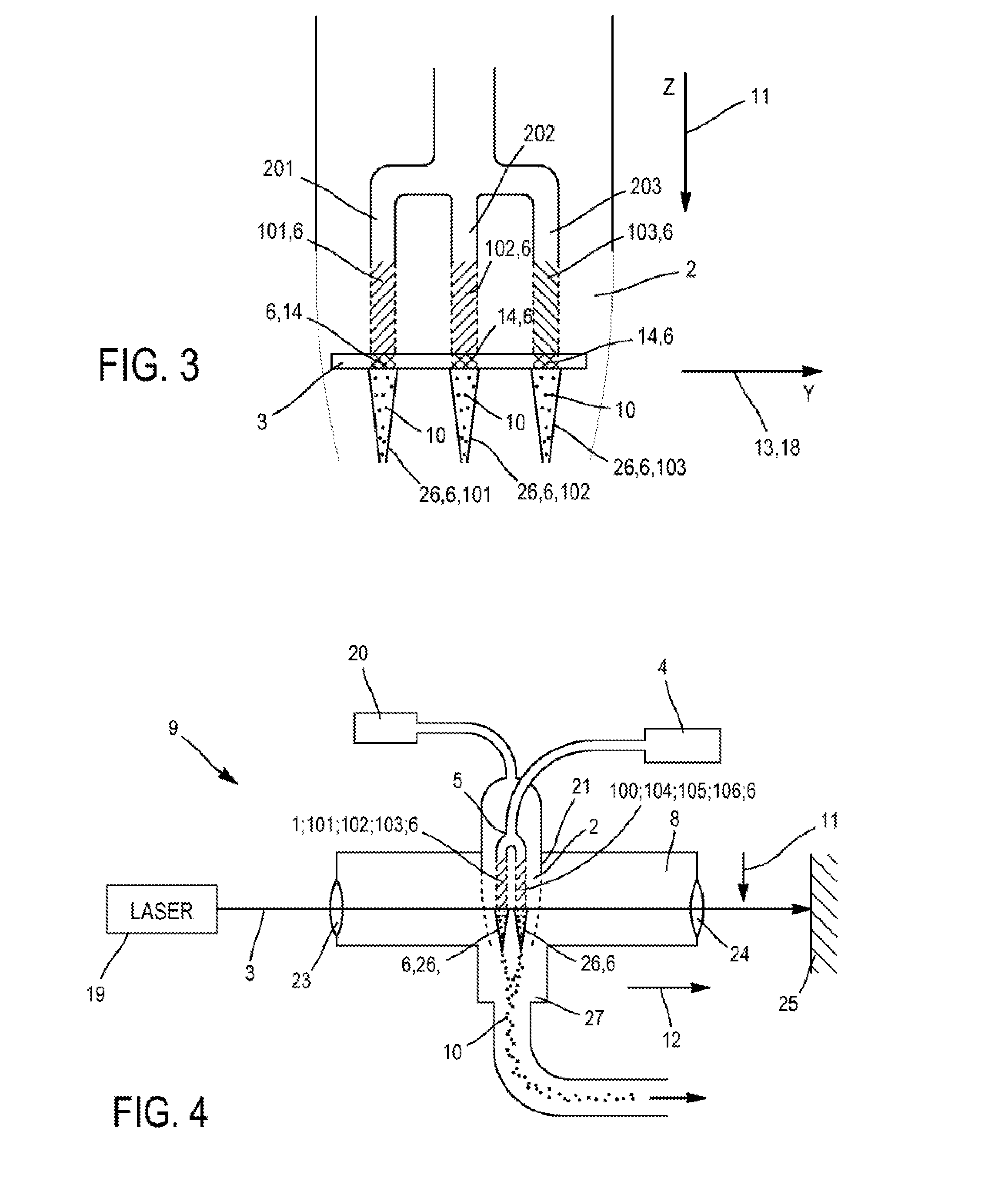Submicron-sized particles including aluminum
a technology of aluminum oxide and submicron particles, which is applied in the field of multi-layer particle production, can solve the problems of inhomogeneity between silicon carbide and aluminium oxide or aluminium in the obtained material, and it is difficult to obtain a material of homogeneous microstructure or nanostructure, so as to improve the control of the homogeneity of distribution and thickness of the layer, and complete the flexibility of the process
- Summary
- Abstract
- Description
- Claims
- Application Information
AI Technical Summary
Benefits of technology
Problems solved by technology
Method used
Image
Examples
example 2
Third Embodiment of the Process According to the Invention; Core 15 Comprising Non-Oxidized Silicon Carbide (SiC); Layer 16 of Aluminium
[0196]Example 2 will only be described where it differs from example 1. Example 2 is identical to example 1, except that in example 2 the surface density of incident energy is 1500 W per square centimetre and the reagent in each reaction stream is a mixture of:[0197]gaseous silane (SiH4) not mixed with oxidizing agents or with oxygen atoms or with molecules comprising oxygen atoms, and[0198]gaseous C2H2 not mixed with oxidizing agents or with oxygen atoms or with molecules comprising oxygen atoms so that the particle cores 15 comprise (preferably consist of) silicon carbide (SiC), preferably not oxidized.
[0199]Particles Obtained
[0200]Particles according to the first example were manufactured according to example 1 and example 2 with the third embodiment of device 9 alone (i.e. with the third embodiment of the process according to the invention). The...
PUM
| Property | Measurement | Unit |
|---|---|---|
| thickness | aaaaa | aaaaa |
| diameter | aaaaa | aaaaa |
| diameter | aaaaa | aaaaa |
Abstract
Description
Claims
Application Information
 Login to View More
Login to View More - R&D
- Intellectual Property
- Life Sciences
- Materials
- Tech Scout
- Unparalleled Data Quality
- Higher Quality Content
- 60% Fewer Hallucinations
Browse by: Latest US Patents, China's latest patents, Technical Efficacy Thesaurus, Application Domain, Technology Topic, Popular Technical Reports.
© 2025 PatSnap. All rights reserved.Legal|Privacy policy|Modern Slavery Act Transparency Statement|Sitemap|About US| Contact US: help@patsnap.com



